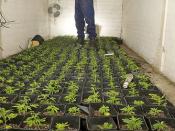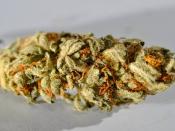Medical Uses Of Marijuana
Marijuana, a drug we see as completely shunned by society. Although it may receive a bad reputation because of media coverage, it has its benefits as well as downfalls. Science will never be proven, but people should be aware of what science is discovering about medicinal marijuana. It is best to be informed about what marijuana is, what conditions it treats, it's history, and the scientific evidence that may shine new light on the use of marijuana.
Marijuana is scientifically known as cannabis sativa. It goes by the aliases of Pot, Dope, Grass, Weed, Hemp, Chronic, Reefer, and many other street names. Marijuana that people smoke or eat comes from the plant cannabis sativa and is dried and then shredded, ground, or rolled. People then smoke the dry substance rolled in paper; marijuana can also be added to food and have the effect of getting you high.
Depending on the person and conditions, smoking marijuana has different effects. When first smoking it, you start to feel relaxed and goofy. After an extended time smoking marijuana, some people's mouths will get dry. Their eyes may become blood shot because the marijuana causes blood vessels in the eye to expand and appear more intense. THC in marijuana will cause short-term memory loss and changes the way your brain is functioning. Users lose their coordination and balance. Some users become paranoid and anxious, and, with marijuana use comes the munchies, when you get very hungry. The final stage of being high is getting very tired. Your heart rate increases to twice its normal rate and your blood pressure increases.
Many health conditions have been found to be treatable with marijuana. In some cases, the chemicals of marijuana reverse the effects of a certain illness or ailment. In...


